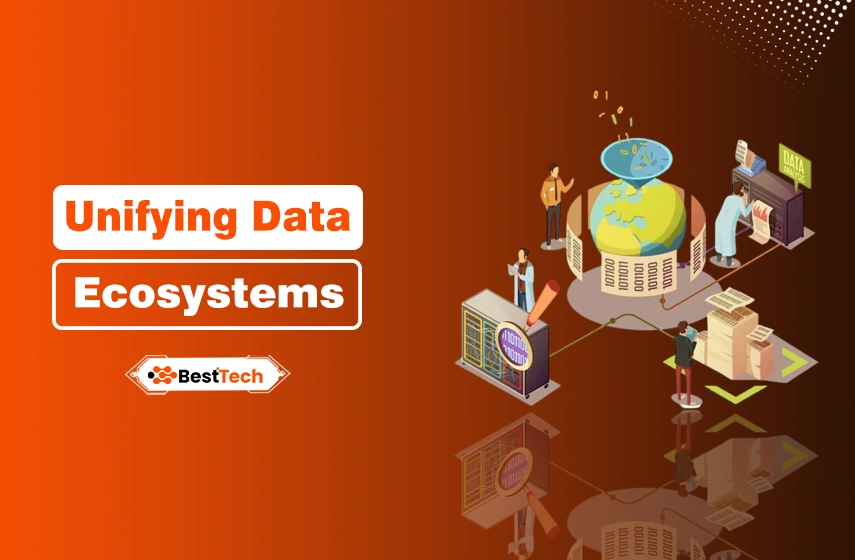In this age of digital transformation, businesses are generating an enormous volume of data from various sources. These resources include cloud applications, IoT devices, and social media, and some of them use legacy systems as well. The fragmentation of this data also often prevents enterprises from actionable insights, and the main reason behind it is the abundance of data.
Nowadays, integrated data engineering and analytics consulting is becoming essential for unifying data ecosystems. This helps in enabling organizations to make smarter decisions and innovate faster. This also provides a competitive edge among their competitors in the market.
In this blog post, I will discuss the future of integrated data engineering and analytics consulting. This will also include an in-depth discussion on unifying data ecosystems.

Why Unified Data Ecosystems Matter?
There are a lot of people who are confused about the reason behind creating a unified data ecosystem. The major reason behind it is that it consolidates our multiple data sources into a cohesive and governed framework. This loss helps to enhance its accessibility.
Here are some of the main benefits that you can attain while unifying data:
- Improved decision-making: Cross-functional teams can access consistent, accurate data.
- Operational efficiency: Reduces redundancies and streamlines workflows.
- Enhanced analytics capabilities: Supports AI, machine learning, and predictive modeling.
Organizations that do not work efficiently and fail to integrate their data risk making misinformed decisions. This led to operational inefficiencies and lost revenue opportunities. You can picture this while working on sales, signing inventory data, over-promising, and under-delivering. This is the impact of ignoring a unified data ecosystem.
Embracing Data Lake Consulting for Scalable Architecture
One of the components of working on a unified data ecosystem is a data-like centralized repository. This helps with managing data structures as structured, Semi-structured, and unstructured data.
You should be aware that engaging a professional data lake consultant enables enterprises to:
- Design scalable, secure data lake architectures.
- Ingest data from diverse sources without compromising quality.
- Enable real-time analytics and reporting capabilities.
Let me give you an example of it: a global logistics company implemented a centralized data lake with consulting support, integrating shipment, inventory, and customer data. This allowed the company to optimize delivery routes in real time, cutting operational costs by 18%.
Driving Strategic Outcomes with Data Strategy Consulting
Let me make one thing clear: building a unified data ecosystem requires more than just technical architecture. This will demand a clear strategy from you. A data strategy consultant helps organizations in multiple ways, such as:
- Align data initiatives with business objectives.
- Establish governance, security, and compliance protocols.
- Identify opportunities for advanced analytics and AI adoption.
A retail enterprise started embracing advanced data strategy consulting to consolidate customer, sales, and loyalty data. This helped them deliver personalized marketing campaigns that increased revenue by 22% within 6 months.
You always have to prioritize the strategy first, as I have seen tech fail without it. Consultants map your goals to data, avoiding shiny objects. They spot AI wins, such as predicting churn. One retailer sent targeted offers; customers stayed, profits rose.
Integrating Engineering and Analytics for Maximum Impact
The synergy between data engineering and analytics consulting ensures that businesses not only collect and store data effectively but also extract actionable insights. Its key practices include several factors such as:
- ETL automation: Streamlining data extraction, transformation, and loading.
- Real-time analytics: Enabling immediate insights for operational and strategic decisions.
- Predictive modeling: Anticipating trends, customer behavior, and operational bottlenecks.
Healthcare organizations, for example, integrated patient records from multiple facilities into a unified data ecosystem. Advanced analytics enabled predictive staffing and resource allocation, improving patient care and reducing wait times by 25%.
Best Practices for Building a Unified Data Ecosystem
Professionals all over the world use various methods for the sake of unifying the data ecosystem. But let me tell you that to successfully unify data ecosystems, enterprises should follow these guidelines:
- Assess current data infrastructure: Identify gaps, redundancies, and integration points.
- Invest in scalable platforms: Use cloud-native architectures and data lakes for flexibility.
- Prioritize governance: Ensure data accuracy, security, and compliance.
- Leverage expert consulting: Combine technical and strategic guidance for maximum ROI.
- Continuously optimize: Monitor system performance and update strategies as business needs evolve.
First, we have to start with assessment, as I’ve also uncovered hidden essentials in old systems. And I have observed that Cloud keeps it flexible; governance builds trust.
Optimize ongoing data evolution and your setup. By combining technical implementation with strategic guidance, businesses can transform fragmented data into a cohesive, insight-driven ecosystem.
Final Thoughts
Unifying data ecosystems is necessary for modern businesses seeking to harness the full potential of their data. Integrated data engineering and analytics consulting enhances decision-making, operational efficiency, and analytics capabilities.
I have experienced that by adopting a data lake architecture and strategic data planning, organizations can streamline workflows and drive innovation. Prioritizing governance, embracing expert consulting, and continuously optimizing data strategies empower businesses.
And this also helps them to remain competitive in today’s data-driven landscape. Embrace a unified approach for sustainable growth and success.

